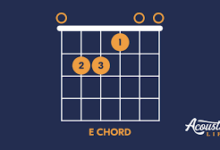How Rows a n d Columns Help You Organize Things Easily (Even If You’re Just Starting!)

Rows a n d columns are everywhere—on your computer screen, in your notebook, even in a box of chocolates! These two simple things help us keep stuff neat and easy to understand. If you’re trying to make a list, a chart, or work on a spreadsheet, rows a n d columns are the secret tools that make everything look nice and tidy. Whether you’re learning Excel or playing with a table in a school project, knowing what rows and columns do can make your work super simple. They’re not just lines—they’re little helpers that sort your ideas and numbers.
Now, let’s imagine you are building something like a calendar, a class timetable, or even a score sheet for your favorite game. Rows a n d columns help you place everything in the right spot. Rows go side to side, while columns go up and down. When they meet, they make a small box called a “cell.” That’s where you can type or write anything you like—names, numbers, or fun facts. If your text doesn’t fit, you can even stretch or shrink the row or column to make more space. Plus, if you don’t want someone to see something, you can hide rows or columns, too! Cool, right? Keep reading, and I’ll show you all the fun and easy ways to use rows a n d columns in your projects!
What Are Rows a n d Columns? A Super Simple Guide for Beginners
Rows a n d columns help us put things in order. Rows go side to side like the lines on your notebook. Columns go up and down like tall buildings. When they cross each other, they make small boxes called “cells.” These boxes are used to write numbers, names, or any kind of info. You’ll see rows a n d columns in school charts, calendars, or even when you’re playing games that need scores. They make your work look tidy and easy to read. You don’t need to be a computer expert to use them! Even kids can learn how they work in just a few minutes. If you use Excel or Google Sheets, rows are marked with numbers like 1, 2, 3, and columns with letters like A, B, C. This makes it super easy to find where to type things in each cell.
Why Rows a n d Columns Make Your Work Look So Neat
When you have a lot of stuff to show—like a list of friends, homework tasks, or your weekly plan—rows a n d columns can help you organize it all! Instead of writing everything in one long mess, you can break it into tiny boxes. It’s like turning your paper into a smart grid. This makes it easier to find things fast. For example, you can put names in one column and phone numbers in the next. Want to make a snack chart for your family? Use rows for days and columns for snacks! With just a little effort, everything looks cleaner and easier to read. People love neat and tidy work, and using rows a n d columns helps you do just that. It’s like magic that turns messy info into clear, happy-looking tables anyone can understand.
Easy Tricks to Use Rows a n d Columns in Everyday Projects
Using rows a n d columns can be fun and super helpful! If you’re making a study plan, rows can be for days of the week, and columns for each subject. Want to track your goals? Make rows for the tasks and columns for check marks. Even at home, rows and columns help. Like planning your meals? Use them for breakfast, lunch, and dinner. The trick is to think of your paper or screen like a grid, and place things in their right spot. You can also add colors to make each part pop! Try using borders to show different sections. You don’t need special software—Google Sheets or even a notebook works great. Once you try it, you’ll see how simple it is to keep your ideas clear. It saves time and keeps everything in its place. Give it a go, and you’ll love the results!
How to Resize Rows a n d Columns Like a Pro (Even If You’re New)
Sometimes you need more space in your row or column because your words don’t fit. Don’t worry! Resizing rows a n d columns is super easy. In most apps like Excel or Google Sheets, you just move your mouse to the edge of the row number or column letter. Then, click and drag to make it bigger or smaller. That’s called resizing! If you want the size to change automatically, try the “Auto Fit” feature. It looks at what’s inside the cell and changes the size for you. You can also make all rows or all columns the same size. This makes your work look even and neat. You don’t need to guess what size is best. Try it a few times, and you’ll get the hang of it. It’s like stretching or shrinking a box until it fits just right. Super easy and helpful!
Hiding and Showing Rows a n d Columns: Secret Tips You’ll Love
Did you know you can hide rows a n d columns too? Yup, it’s like having a secret folder in your chart. Sometimes you have info you don’t want to show all the time—like a test answer or extra notes. With just one click, you can hide a row or column. In tools like Google Sheets or Excel, just right-click on the row number or column letter, then choose “Hide.” Poof! It’s gone from view. But don’t worry—it’s not deleted. To see it again, click and drag over the area, then choose “Unhide.” This trick is fun and useful for schoolwork, business lists, or even game plans. You can focus on what you need, and hide the rest. It keeps your tables clean, private, and easy to read. Try it once, and you’ll feel like a spreadsheet ninja!
Rows a n d Columns in Real Life: Fun Examples for Kids and Adults
Rows a n d columns aren’t just in computers—they’re in real life, too! Look at your classroom: desks are in rows and sometimes columns. At the grocery store, food is placed in rows on shelves. Even on a calendar, the days and weeks are shown using rows a n d columns. Ever played bingo or tic-tac-toe? Yep, you’ve used them there too! Making a chore chart? Use rows for days and columns for family members. Want to plan a picnic? Use them to list food, games, and who’s bringing what. Once you start noticing them, you’ll see rows and columns everywhere. They help us make sense of the world around us. Whether you’re a kid or a grown-up, these little lines help big time with sorting, planning, and organizing. They’re simple but powerful tools that make everyday life better.
Conclusion
Rows a n d columns help you stay neat and smart. When things are messy, they come to the rescue. You can use them in school, at home, and even for fun. They are like tiny helpers that make big jobs easy. Once you learn how they work, you’ll feel super clever using them in your projects.
No matter your age, rows and columns are for everyone. You can use them to plan your day, make a list, or keep score. They help your ideas look clean and clear. Now that you know the secrets, go and try them yourself. It’s easy, fun, and you’ll love how neat everything looks!
FAQs
Q: What are rows a n d columns used for?
A: Rows a n d columns help you organize information in a neat and tidy way, like in tables or charts.
Q: How do I know which is a row and which is a column?
A: Rows go side to side (left to right), and columns go up and down (top to bottom).
Q: Can I resize rows a n d columns in Excel or Google Sheets?
A: Yes! Just drag the edge of a row or column, or use “Auto Fit” to make it fit your content.
Q: How do I hide rows a n d columns?
A: Right-click the row or column and select “Hide.” To show it again, use “Unhide.”
Q: Are rows a n d columns only for school or work?
A: No, you can use them for games, home chores, meal plans, and so much more!





